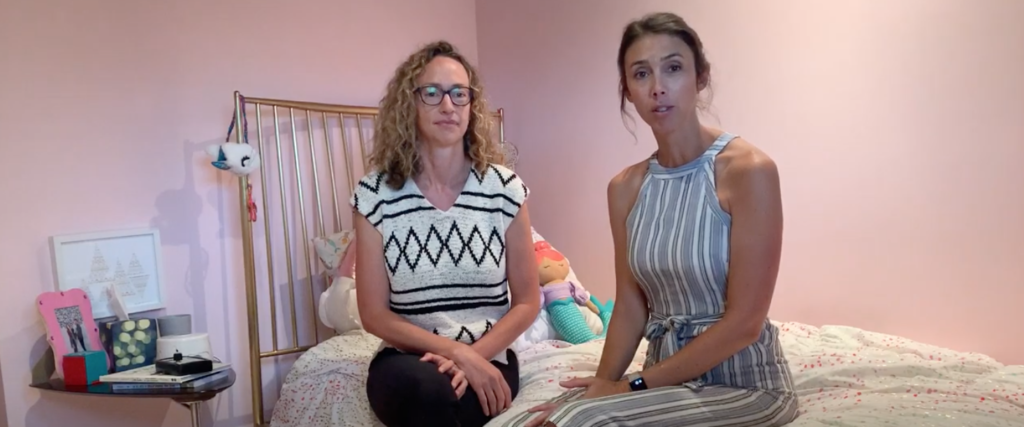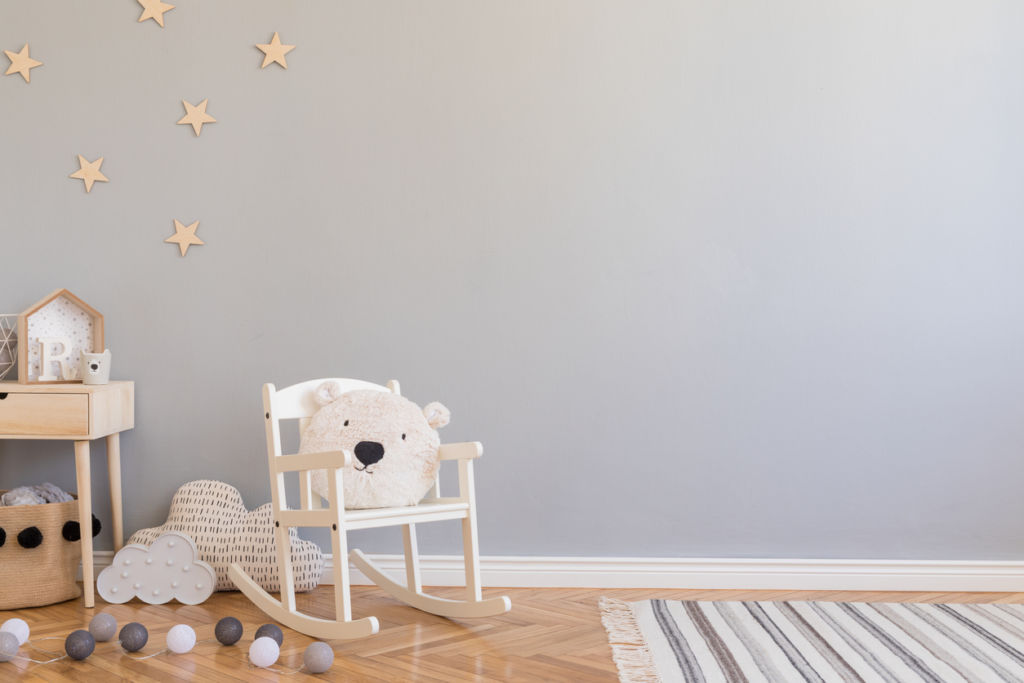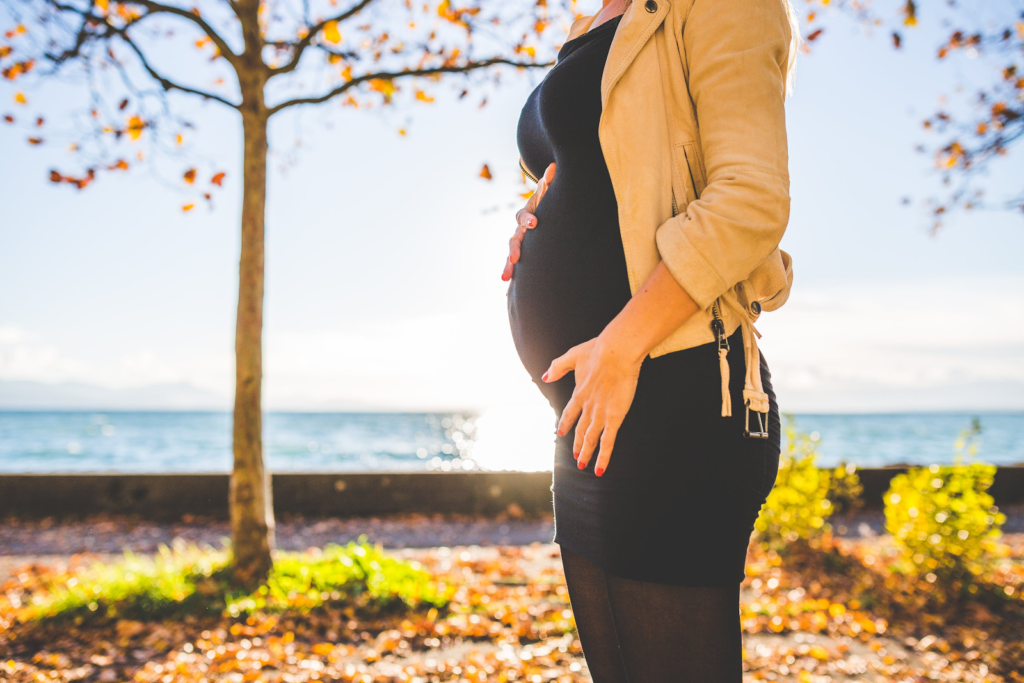Creating a Low EMF Sleep Space: Baby Monitors
Alyssa Veneklase talks with Lisa Tiedt, Building Biologist and owner of Well Abode, about creating health sanctuaries in our own homes. You can watch this video on YouTube.
Alyssa: Hi, again. We are in our series of how to create a safe sleep space, and I am Alyssa, talking to Lisa Tiedt again. She is a Building Biologist, and I’m a sleep consultant. So we’re talking about — we’re in my daughter’s bedroom. She’s seven and a half now, but this was her nursery, and it’s a small space, as you can see. So a lot of the sleep clients I work with have small or smaller nurseries, and when you have things like sound machines and monitors and maybe even a router in the room, how do you position things to make it the safest possible? So first why don’t you tell us again what a Building Biologist is, and then today we’re going to be talking about monitors.
Lisa: Yep. So a Building Biologist looks at any built space, whether it’s a home or a school or an office building, and looks at it for anything that directly impacts the health of the people who live, work, or sleep within those spaces. A Building Biologist assesses air quality, indoor air quality, electromagnetic fields, as well as water quality.
Alyssa: Okay. So today with monitors, is it electromagnetic fields, EMFs?
Lisa: Today, we’re focused on how to create a low EMF space for your child’s bedroom. Safe sleep or healthy sleep is one of the most important things that you can do for your child’s health because sleep is the time where the body is naturally rejuvenating and renewing itself every day.
Alyssa: So I know that when — so when this was a nursery, the crib was there, and I think had the monitor probably as close to this bed as it was — I mean, it was very close to the crib, which I think most parents with a video monitor think we have to do to see them better. So let’s talk about what that little guy is doing to us right now.
Lisa: Yes. So how to create a low EMF space for your child, there — we’re looking at the radio frequency category of manmade EMFs, and baby monitors project or emit radiation. And so I’m going to turn the RF meter on right now. We are paying attention to — mostly to that middle line that says max, in a safe sleep space, the number that you want to get to is 10. If I am Finnley and my head is right by this video baby monitor, it is at around, you know, a half a million microwatts per meter squared. And so this is —
Alyssa: So 445,000 and you want to have 10? Not 10,000. One zero, 10.
Lisa: Ten, like double digits, 10. And we’re at about a half a million here. And if you’re paying attention to nothing other than even just to numbers, you can see that, you know, one baby monitor can put the entire bedroom —
Alyssa: In the extreme zone.
Lisa: In the blinking red extreme, extreme zone. So one of the very — in terms of steps that you can take, distance from source always matters because the radiation drops off with distance. So if you absolutely have to have a video baby monitor, move this as far away from the bed space as you possibly can. Secondarily, what you can do is actually shield the baby monitor. This is just a case that I bought at the Ace store in my neighborhood. This is all metal. They sell plastic ones. Plastic ones don’t reflect the radiation, so you’ll have to get a metal one. This was about five dollars.
Alyssa: And it’s just a little pencil case, right?
Lisa: And it’s just a little — yeah. It’s just a little pencil case.
Alyssa: It looks like an Ikea thing that I have to put utensils in.
Lisa: Yep. So what you can see now is this reduced the radiation from the video baby monitor from —
Alyssa: So are we looking at the top number now? So it’s holding — the middle number is what it was before?
Lisa: Exactly. So the middle number is the peak hold number, and then the top number is the real time number.
Alyssa: So we went from 500,000 to about 8,000 to 9,000 — it’s going down to 7,000 µw/m².
Lisa: Around 5,000 to — 5,000 to 10,000. That’s a 70% decrease! And then even — and then another step down would be instead of getting a video monitor, you would actually just get a baby monitor that has audio only and not video. So you can see here that the video monitor — now we’re paying attention to the middle number again — was at 500,000 µw/m². An audio monitor only is about 125,000 µw/m². So it’s several — you know, four times magnitude less than what the video monitor is. Because this particular unit would be plugged into a wall, there’s also just RF shielding fabric that you can get. This is a bag kind of made for the size of a router, but you can get teeny tiny ones, and you can see it goes from 123,000 µw/m² to about 5,000 µw/m².
Alyssa: 5,000 to 10,000.
Lisa: Yep. 5,000 to 10,000 µw/m². Now, the absolute best thing that you can do — there’s a D-Link baby monitor with video that you can actually have a hardwired ethernet connection, so you can still have a video baby monitor, but it doesn’t produce any RF because it’s not wireless at all. (The D-Link DCS-5222L video monitor has zero EMFs when hardwired.) Or, if your house is well-suited for this, just don’t have a baby monitor at all.
Alyssa: If you’re right next door and can hear your child…
Lisa: Exactly. And, you know, if you use one —
Alyssa: I should say not next door — in the next room.
Lisa: Right. In the next room. You know, just use is sparingly. Don’t use it frequently. And then also remember to never leave it on during naptimes and nighttime sleeping because for a growing child, the sleep time is all the same. And just remember that this is the base station for the video unit. Just remember that this base station is emitting all the time, as well, and so this is getting up to 1,000,000µw/m². So if this was in your kitchen, for example, this would be radiating while you guys are eating breakfast, lunch, and dinner. So you can shut that off and then see — this remaining is still coming from the station at the bed, but you can just see that either completely unplug these or turn these off. Don’t leave these on in the kitchen —
Alyssa: All the time when you’re not using it.
Lisa: — or your master bedroom when you’re not using it.
Alyssa: Right. Great. Thanks!
Research
To learn more about the health impacts of man-made electromagnetic fields (EMFs), check out The BioInitiative Report. It has a 19 page Summary for the Public & Charts which is the preeminent summary of known EMF health impacts on the human body. The full 1,500-page report authored by an international panel of M.D. and Ph. D. scientists and physicians, analyzes +3,800 scientific, peer reviewed studies showing adverse health hazards of electromagnetic radiation, especially with children. Diseases and disorders include cancer, neurological diseases, respiratory diseases, behavioral disorders i.e. ADD and autism, immune dysfunction, Blood-Brain Barrier permeability, reproductive failure & birth defects, chronic fatigue, insomnia, depression, headaches, muscle/joint pain, chronic inflammation and many more.
Additional info: We found a new baby monitor after this video recording that is the lowest emitting monitor on the market! Check them out at Bebcare!
Creating a Low EMF Sleep Space: Baby Monitors Read More »





